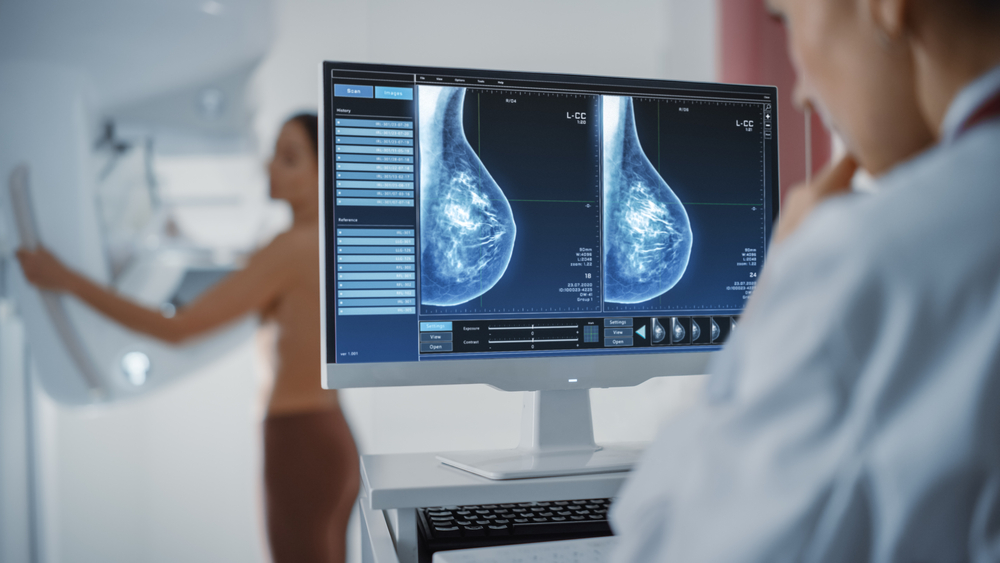What is Gail Model to Estimate Breast Cancer Risk?

Breast cancer is among the most prevalent cancers that affect women, with more than 2 million fresh cases diagnosed each year worldwide. Assessing an individual's risk of developing breast cancer is an essential step in identifying those who may benefit from screening and preventive measures. The Gail Model is a widely used tool for estimating an individual's breast cancer risk based on their personal and family medical history. In this blog post, we'll explore the Gail Model in more detail, including an overview of the breast cancer risk factors that it takes into account.
Breast Cancer Risk Factors
There are numerous breast cancer risk factors that make a person more prone to developing breast cancer. These factors can be grouped into different categories, including demographic factors, personal medical history, and lifestyle factors.
Demographic Factors
Gender is one of the most significant demographic factors that can influence breast cancer risk. Women are far more prone to having breast cancer compared to men, and this risk increases with age. Age is another crucial demographic factor, with breast cancer risk increasing as women get older.
Personal Medical History
A medical history of breast cancer can increase a person's risk of developing breast cancer.
Family History
Women and females that have a family history of breast cancer are more prone to developing the disease themselves.
Reproductive History
Reproductive history is another breast cancer risk factor that can affect breast cancer risk. Brеast cancеr risk may bе higher іn women who have never given birth or who had their first child after turning 30. A woman's risk of developing brеast cancеr may also be іncreasеd by early mеnstrual cyclеs or a latеr mеnopausе.
Lifestyle Factors
Certain lifestyle factors can also increase breast cancer risk. These factors include obesity, physical inactivity, and alcohol consumption. Overweight or obese women may be at a higher risk of developing breast cancer. Physical activity can help reduce breast cancer risk, as can limiting alcohol consumption.
What is the Gail Model?
The Gail Model is a tool for estimating a person's risk of developing breast cancer over the next five years. The model was developed by Dr. Mitchell Gail and his other companions at the National Cancer Institute and is named after him. The Gail Model considers several of the risk factors mentioned above, including age, age at menarche, age at first birth, family history, and previous breast biopsies.
The Gail Model calculates an individual's breast cancer risk based on their personal and family medical history. The model uses a set of coefficients to weigh the importance of each factor in predicting breast cancer risk. For example, the coefficients for age and family history are higher than the coefficients for age at first live birth and age at menarche.
To use the Gail Model, a healthcare provider will ask the patient some questions about their medical history. The answers to these questions are then entered into a computer program or online calculator, which uses the Gail Model to estimate the patient's breast cancer risk.
Limitations of the Gail Model
While the Gail Model is a widely used tool for breast cancer risk assessment, it does have some limitations. One of the most major drawbacks is that it only considers a limited number of risk factors. Other important factors, such as genetic mutations (e.g., BRCA1 and BRCA2), exposure to radiation, and certain environmental factors (e.g., exposure to endocrine-disrupting chemicals) are not included in the Gail Model.
Additionally, the Gail Model is designed to estimate a person's risk of getting breast cancer over the next five years. It is not intended to predict the risk of ductal carcinoma in situ (DCIS) or lobular carcinoma in situ (LCIS), which are non-invasive forms of breast cancer.
Another limitation of the Gail Model is that it may not be accurate for all populations. The model was developed using data from primarily white women in the United States and may not be as accurate for women from other racial or ethnic groups or for women living in other countries.
Implications for Breast Cancer Risk Assessment and Prevention
Despite its limitations, the Gail Model is a useful tool for estimating breast cancer risk in certain populations. The model can help healthcare providers identify individuals who may benefit from more frequent breast cancer screening or from preventive measures, such as risk-reducing medications or prophylactic surgery.
Conclusion
The Gail Model is a widely used tool for estimating an individual's breast cancer risk based on their personal and family medical history. While the model has some limitations, it can help healthcare providers identify individuals who may benefit from more frequent breast cancer screening or from preventive measures. It's important to remember that the Gail Model shouldn't be the primary factor when making decisions about breast cancer screening or prevention.
Healthcare providers should also consider an individual's overall health, personal values and preferences, and other variables that could affect their risk of breast cancer. By combining regular breast cancer screening with healthy lifestyle choices, individuals can take steps to reduce their risk of developing this common and often deadly disease.
If you’re doubtful about having breast cancer, consult your nearest breast surgeon immediately!






